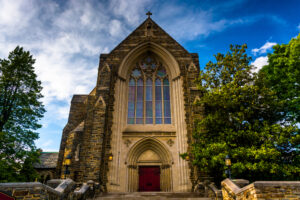Nearly six months after publicly calling for the release of a list of known offending priests in the diocese, the Roman Catholic Diocese of Fargo released the names of 31 leaders in the church connected to the sexual abuse of minors. The Bismarck Diocese also released a list of 22 clergy members who likely sexually abused a minor on January 2, 2020.
Notably, the list only includes those involving “substantiated allegations” of minor sexual abuse. The Fargo Diocese has explained its definition of substantiated allegation as “one for which sufficient corroborating evidence establishes reasonable grounds to believe that the alleged abuse in fact occurred.”
The lists include only the clergy member’s name, year of ordination, year of death, and basic status in the church. Twenty-two of the 31 clergy are deceased from the Fargo Diocese’s list, while 20 of the 22 on the Bismarck Diocese’s list are deceased. The Bismarck Diocese also notes there have been no substantiated allegations of sexual abuse of a minor in the dioceses since 1989.
As noted in the New York Times by Tim Lennon, president of the Survivors Network of those Abused by Priests, without additional details like “work history, photographs, when the allegations against each clergy member were received and what actions were taken in response,” the release of the list comes off as a “public relations ploy to appease the public.” The Fargo list does not provide where any timeline of when the church learned of the substantiated allegation or took action against these individuals. Further, neither the Fargo nor Bismarck lists provide information about where the living clergy are currently residing.
Media outlets and other organizations tracking public accusations of clergy abuse have also noted some names appear to be missing from the dioceses’ lists. BishopAccountability.org is an organization which maintains a database of publicly accused priests based upon dioceses’ published lists, publicly-filed court records, and news articles. Between the dioceses’ lists and the database, there are at least five clergy members who have allegedly abused individuals but are not on the lists publicly released by the dioceses yesterday. For example, as of August 2019, at least two priests not named on the dioceses’ lists were under investigation for sexual abuse.
Additionally, the dioceses note they have completed an extensive review of their files, including Diocesan Review Board evaluation, to determine which names to release. However, as part of the 2002 U.S. Catholic Conference of Bishops’ establishment of the Office of Child Protection, this same audit should have already taken place within the dioceses. In fact, an initial audit was completed sometime in late 2003. Although the information audited as part of the creation of that office had already been evaluated, it has never been made public.
Finally, in calling on the church to release the list, our office along with Michael Bryant of Bradshaw & Bryant, also commenced a civil lawsuit against Michael Wight, The Society of Our Lady of the Most Holy Trinity, and The Roman Catholic Diocese of Fargo. The complaint includes the allegations of abuse against Michael Wight, a priest who served in Belcourt, North Dakota under the direction of the Fargo Diocese and The Society of Our Lady of the Most Holy Trinity. The plaintiff and victim of the conduct was an adult when the abuse occurred. Notably, despite the substantial allegations against Wight and his subsequent re-assignment within the church, Wight is not included on the Fargo Diocese’s list of abusers. This is likely because the list only sexual abuse victims who were under the age of 18 when the abuse occurred.
We commend the North Dakota dioceses for releasing these lists; however, we question how many others should be on these lists and hope the dioceses will release additional names and details. We now call on the dioceses to release the files of all clergy that are subject to substantiated allegations of abuse.
Additionally, we call on the North Dakota legislature to open the statute of limitations so these offenders cannot be protected from civil remedies. As several other states like Minnesota, California, Delaware, and Hawaii have already done, opening up these windows allows for victims to initiate civil lawsuits against these offenders, despite the abuse occurring even decades ago. If the North Dakota legislature opens up the statute of limitations and creates a window, victims of the church’s conduct can come forward and seek compensation for the past abuse they suffered.

Tim O'Keeffe is a founding partner of O'Keeffe O'Brien Lyson Attorneys in Fargo, North Dakota. Tim is a personal injury trial lawyer representing victims in serious injury, medical malpractice and wrongful death cases throughout North Dakota and Minnesota. Tim is the Past President of the North Dakota Association for Justice and currently serves on the Board of Governors for the American Association for Justice.













Comments for this article are closed.